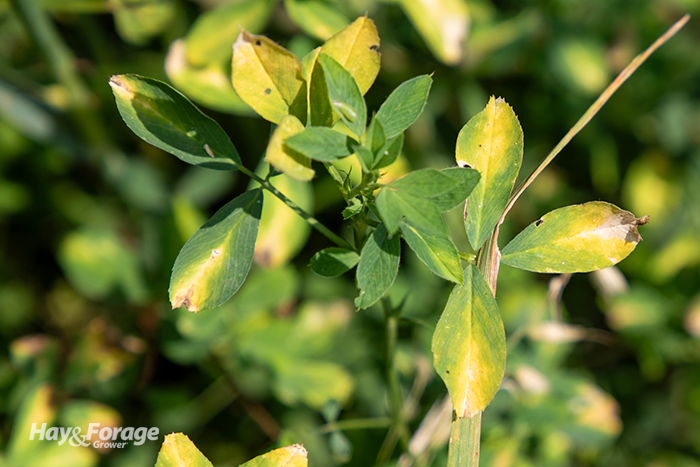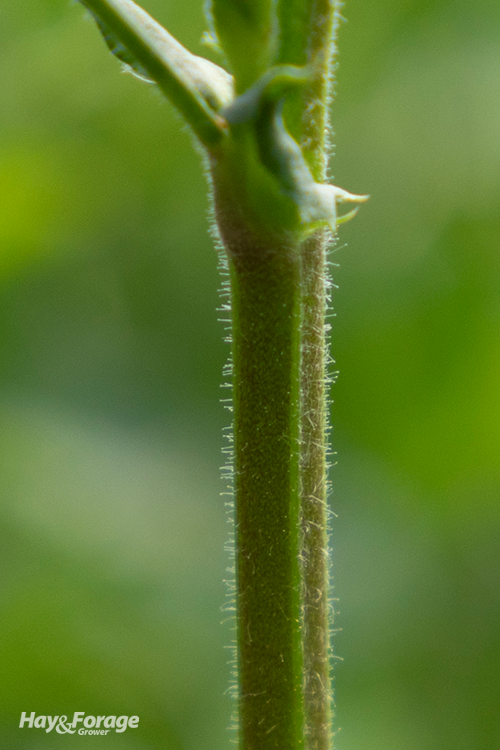
They are small, green, and the bane of alfalfa — potato leafhoppers. Sans an intentional effort to monitor their presence, usually with the use of a sweep net, they often lurk undetected. However, the damage they do is often, but not always, easily visible.
This is the time of year when leafhoppers set up residence, and they are being reported across multiple states. “Growers would be wise to keep an eye out for increasing populations of this pest, because once their feeding is evident, economic damage has been done,” writes John Tooker, an extension entomologist with Penn State University. “Their feeding reduces yield and quality, especially by lowering protein content, and they can decrease stand longevity as well.” In other words, the triple whammy.
Potato leafhoppers do not overwinter in Northern regions; rather, they migrate north each spring on storm fronts, often arriving in early June. Tooker notes that monitoring leafhopper populations can be frustrating due to the sporadic nature of their infestations — even in bad leafhopper years, many fields can escape damage.
Adult potato leafhoppers deposit eggs into plant stems and leaf veins. In warm weather, these eggs will develop into adults in about three weeks, so populations can balloon quickly. The insect’s straw-like mouthpart can extract plant juices, and its feeding disrupts nutrient flow within plants, which causes a yellow triangle to form at the leaflet tips. This is often referred to as "hopper burn.”
“This evidence of damage does not develop until seven to 10 days after feeding begins,” Tooker explains. “As feeding continues, damage gets worse, and the chlorotic areas spread toward the base of the leaflet. Once hopper burn is evident, economic loss has occurred,” he adds.
Control measures
Vigilant control of potato leafhoppers will always pay dividends, and several approaches can be taken.
Tooker reminds alfalfa growers that tolerant varieties are available. “These varieties are covered with fine hairs or ‘glandular trichomes,’ which decrease leafhopper feeding, but this option needs to be pursued before establishment. Another option is to mix other forages in with alfalfa. Mixed alfalfa-grass stands appear much better at tolerating leafhopper damage than pure stands of alfalfa,” he asserts.

Spiders and other natural enemies kill potato leafhoppers, so using integrated pest management and spraying insecticides only when economic populations develop will help to utilize these natural control measures. “We have growers in Pennsylvania who do not treat their alfalfa fields with insecticides and claim they do not see potato leafhopper damage,” Tooker relates. “Natural enemies would be the best explanation for this lack of damage.”
When damaging populations of potato leafhoppers do develop, the entomologist recommends an early harvest or the use of insecticides. An early harvest can stop damage, but regrowth needs to be scouted to determine if the next cutting also develops damaging populations.
The most efficient and economic control of potato leafhopper starts with diligent field sampling and monitoring. Apply insecticides only when economic thresholds are met. These levels vary by the size and value of the alfalfa, and most states have guidelines to help determine when an insecticide application is warranted.
“In my experience, regular scouting and the use of economic threshold levels can limit the need for insecticides to once a summer,” Tooker concludes.
